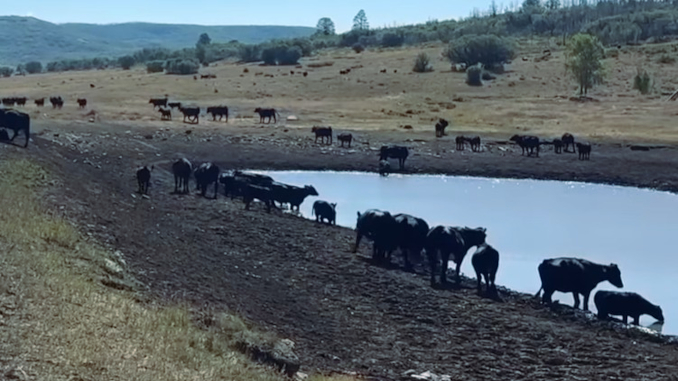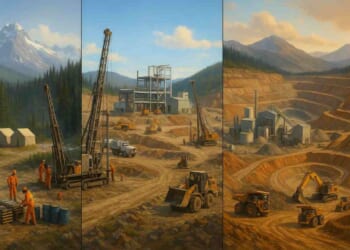
By José Niño
America’s independent cattle ranchers are vanishing at an alarming rate, and the consequences extend far beyond rural communities. According to R-CALF USA (Ranchers-Cattlemen Action Legal Fund United Stockgrowers of America):
American ranchers are vanishing at a record rate. Nearly 107,000 beef cattle farms and ranches have been lost in five years (over 21,000 a year).
The 2022 Census of Agriculture by the Department of Agriculture confirms this crisis, documenting that the United States has lost nearly 107,000 beef cattle farms and ranches between 2017 and 2022. This represents an average loss of over 21,000 operations per year. Even more troubling, this alarming trend forms part of a longer decline, with more than 665,000 beef cattle operations disappearing since 1980.
Click the Link Below to Listen to the Audio of this Article
The census reveals additional concerning details about the scope of this consolidation. America’s cattle herd has shrunk to its smallest size since 1951, with only 88 million head remaining as of 2022, down 6% from 2017. The beef cattle herd specifically declined to 29.2 million head, representing an 8% reduction and a loss of 2.5 million animals. The number of farms involved with cattle production decreased by 17% during this five-year period. More recent data shows the crisis continuing unabated. As of Jan. 1, 2025, the U.S. cattle inventory stood at just 86.7 million head, the smallest since 1951.
Multiple factors are driving this perfect storm devastating America’s ranching industry. Corporate consolidation in meatpacking stands out as perhaps the most significant threat. The beef packing industry has become extraordinarily concentrated.
According to a report by The American Prospect, four global companies—Tyson, JBS, Cargill, and National Beef—now control 85% of the “fed cattle market”—“live cattle that have been fattened in a feedlot to a specific weight and are ready for slaughter.” This consolidation gives these multinational corporations enormous power to set prices paid to ranchers, creating what economists call a “monopsony,” where buyers have outsized influence over sellers.
The financial impact on ranchers has been significant. Since 2015, cattle prices paid to ranchers have decreased by 35% while retail beef prices increased by 36%, allowing the “Big Four” packers to dramatically expand their profit margins. Ranchers find themselves squeezed between rising input costs and stagnant or declining prices for their cattle. Ranchers now receive less than 30¢ of every retail beef dollar spent by consumers, representing a historic low. Meanwhile, packer profits have soared to record levels.
Environmental challenges compound the economic pressures facing ranchers. Prolonged drought conditions beginning in mid-2020 have significantly impacted cattle operations, particularly in the Great Plains and western states.
Per a June 2023 report by the Federal Reserve Bank of Kansas City, drought reduces hay production by approximately 12% for every one unit increase in drought severity while increasing hay prices by 5% per drought severity unit. This forces ranchers to liquidate herds when they cannot afford to feed their cattle, accelerating the decline in cattle numbers.
Rising production costs squeeze ranchers from another angle. Cattle ranchers face some of the narrowest profit margins in agriculture, while dealing with escalating costs across every input. Feed costs, fuel, labor, veterinary care, equipment, and land expenses have all surged in recent years.
Production expenses for beef farming operations averaged $72,345 per farm in 2022, while cattle feedlot expenses averaged over $3.4 million. According to projections, interest payments on farm debt are expected to reach $33.1 billion across agriculture in 2025, roughly 7% of all costs.
International competition adds yet another challenge. Beef and cattle imports have significantly undercut domestic producers in recent years. In 2024, total beef imports (including beef from imported cattle) reached a record 6.38 billion pounds, constituting approximately 22% of domestic consumption. By 2025, imports are projected to exceed 5.2 billion pounds.
The accelerating loss of cattle ranches poses serious risks to U.S. food security and national security. As R-CALF USA CEO Bill Bullard noted:
We are fast centralizing our production supply chains for beef and lamb, making them much more vulnerable to disease, climate and geopolitical events.
When a handful of multinational corporations control most of the beef processing, any disruption to their operations (whether from disease, natural disaster, cyber attack, or international conflict) can rapidly cascade through the entire food system.
The consolidation also threatens rural communities across America, particularly in western states, where cattle ranching provides jobs, supports service industries and main street businesses, and sustains schools, hospitals, and churches. With more than half of all beef cattle farms and ranches that existed in 1980 now gone, entire rural economies are being hollowed out. Small towns that once thrived on the economic activity generated by surrounding ranches now struggle to maintain basic services as their tax base and population decline.
Without policy changes to level the playing field for independent ranchers, the trend will likely continue until American beef production exists only in the hands of a very few multinational corporations.



















